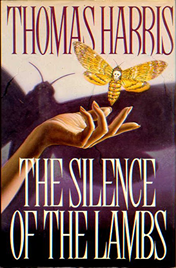If you have ever wondered how to mix brown paint, this article will teach you everything you need to know to get it right. What... The post How to Make Brown Paint appeared first on School of Atelier Arts.
If you have ever wondered how to mix brown paint, this article will teach you everything you need to know to get it right.

What exactly is brown?
When we think of colors, we tend to think about red, orange, yellow, green, blue or purple. These are the colors we are often taught about in school.
But we all have likely seen colors in the real world that were not exact matches to what we see on a color wheel. Like the color brown.
But what colors do I need to mix together to make brown paint? And why specifically isn’t brown on the color wheel?
By solving these two mysteries, you will unlock the secret of how to mix brown paint.
Want more great color theory information? Read this article on colors opposites on the color wheel.
There are three elements to every color.
If you truly want to understand colors and how to mix them, you need to learn how to identify the three major elements of color.
Every color that you observe has three elements: value, chroma, and hue.
Value is how light or dark a color is. Lemon yellow is a very light color, for example, and blue jeans are a darker color.
Chroma is how intense the color is. A lemon is very, very yellow. Mustard is also yellow, but not as intense of a yellow as the lemon.
The lemon is more chromatic than the mustard. Mustard is more neutral than the lemon.
Hue is where the color is located on the color wheel. The hue can be red, orange, yellow, green, blue, or purple. The hue of a lemon is yellow. The hue of mustard is also yellow. The hue of blue jeans is blue.
Enjoying this article? Join our popular mailing list for more great art insights delivered directly to your inbox.
Why isn’t brown on the color wheel?
Brown isn’t on the color wheel because brown is actually orange.
What?
You heard me.
Brown is orange.
Now before you panic, let me explain why brown is orange and how to mix brown paint with this knowledge.
The hue of brown is actually orange. This means if you had to assign the color brown to be red, orange, yellow, green, blue or purple, it fits most closely with orange than with any of the other colors.
Some of you might be thinking, “It doesn’t look orange!”
And that is because of the chroma of brown. Brown is an orange, but it is a very neutralized orange. It is not very chromatic.
Think of the earlier example when we compared the intensity of a yellow lemon to the intensity of yellow mustard. The yellow mustard is a more neutral yellow than the yellow of the lemon.
Now think about orange. A very intense orange, like the color of an orange fruit, is highly chromatic.
But if you think of other examples of the color orange, such as a bad spray-on tan, it is still orange but less chromatic than the fruit.
If you neutralize it even more than that, you will get brown.
So, the reason brown is not on the color wheel as a separate color is because it’s already there – orange! The hue of brown is orange.
So now what? How can this help you mix brown paint?
A Formula for Exactly How to Mix Brown Paint
Now that we know the three elements of every color (value, chroma, and hue), and have recognized that brown is in fact a neutralized orange, we are ready to start mixing brown paint.
There are 3 steps to mixing brown paint
Step 1: Make orange paint. Step 2: Make a neutral paint Step 3: Add your neutral paint to your orange paint. Step 4: Adjust the valueEach of these steps requires a little bit more knowledge to execute successfully. Here is what you need to know in order to mix brown paint successfully.
Read more about Colour Theory here.
Step 1: Make orange paint
Because brown is a neutralized orange, we need to start by making the color orange. You can do this by adding yellow and red together to make orange.
But it is not quite that simple. Many people think that you need to take equal parts red and equal parts yellow to make orange paint, but that is not quite true.
Different pigments have different strengths. Red is often a much stronger pigment than yellow. So if you want to make orange paint, you need to add quite a bit more yellow than red in order for it to come out orange.
Step 2: Make a neutral paint
Mixing a truly neutral paint is worthy of its own post, but I will put a simplified version of it here.
A neutral color is a color that doesn’t look like any color on the color wheel.
It is like a grey, but it is not a green-grey, or blue-grey, or red-grey, or yellow-grey. It is a grey that doesn’t look like any other color.
You can make this color by mixing together red, yellow, and blue. This mixture is called a chromatic neutral, which sounds contradictory but you do not need to worry about it too much for mixing brown paint.
What you do need to worry about is mixing red, yellow, and blue together until they look like no color.
But be careful! Remember that different colors have different strengths of pigment. You cannot take equal parts of red, yellow, and blue and expect to get a true neutral.
And there is one other pitfall to watch out for! When you mix red, yellow, and blue together, the color will look quite dark. It’s hard to tell if it is truly neutral or not when it is so dark in value.
This is why you also want to add some white paint to your neutral. By lightening the value, it makes it easier to see if your mixture is truly neutral.
It’s important that your mixture is the most non-color (kind of greyish) possible in order to mix brown paint successfully in the next step.
Step 3: Add the neutral paint to the orange paint in order to mix brown paint
So far you should have mixture of orange and one mixture of neutral.
In order to neutralize the orange in order to turn it into brown, we need to add some of the neutral paint to the orange paint.
BUT BE CAREFUL! GO SLOW!
Do not add too much neutral to your orange paint too quickly. Your neutral mixture is going to be stronger than your orange mixture. Therefore, you need to add small amounts of neutral to your orange mixture at a time.
As you slowly add neutral paint to the orange, you will notice that it will start to turn brown.
If you want to mix a brown that still feels pretty orange, like a bad spray-tan, you don’t need to add very much neutral.
If you want to mix brown that is very brown, you will need to add more of your neutral paint to the orange.
Check out our free Color Theory Lesson Plans
Step 4: Adjust the value of your brown paint
Once you have mixed a brown that feels the right amount of brown to you, there is one more step to consider.
Remember that one of the three elements of color is value, or how light or dark your brown paint is.
If the brown you mixed is too light, you can darken it by mixing a neutral that does not have white in it.
Another way to darken the value is to add a little black to it, but be careful about adding too much black because black is actually a very dark blue, red, or purple and it will change your brown into a different color if you ad too much.
If you need to make your brown lighter in value, you can add white to it. But white is often just a very light blue, so if you add too much you will change your brown into a different color.
Enjoying this article? Join our popular mailing list for more great art insights delivered directly to your inbox.
Voila! You just learned how to mix brown paint.
Mixing brown paint can be a struggle. It is a very finicky color to mix, because if you add too much neutral or not enough, you won’t get the exact color of brown you are looking for.
You also have to balance the value out, often with white or black, which can change the overall color of your brown.
But, if you understand the underlying principles of value, chroma, and hue, and follow these detailed instructions, you will be mixing browns in no time.
Read More Color Theory Articles:
Have you tried mixing brown? Let me know in the comments below. How did it go? What was hard? What was easy?
Join our newsletter for great art information delivered directly to your inbox!
The post How to Make Brown Paint appeared first on School of Atelier Arts.










